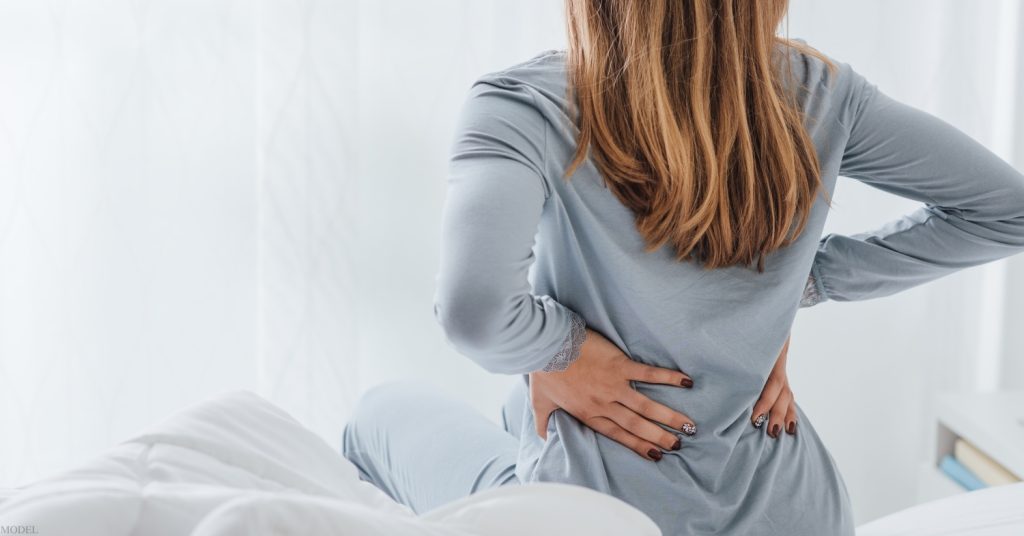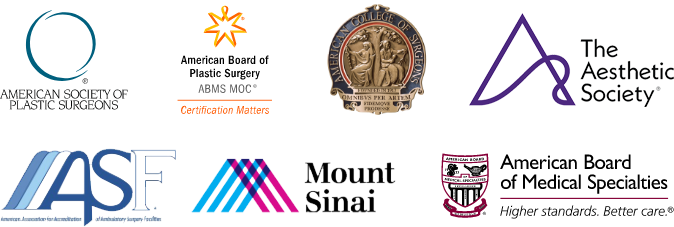Recently, a patient came into my office for a consultation about a body contouring operation. She mentioned that she’d read about lower back pain after a tummy tuck and was concerned. Unfortunately, she chose another surgeon who claimed to have a special technique to prevent back pain.
As a surgeon with extensive tummy tuck experience at my NYC practice, I know that the only way to guarantee zero back pain is to perform a subpar operation. Let me explain why this happens and how proper muscle repair affects recovery.
The Anatomy of a Tummy Tuck
During a tummy tuck, an incision is made in the lower abdomen. The skin from the belly button to the incision is removed, and the remaining skin is pulled downward while the mons pubis area is gently elevated. How tightly the wound is closed depends mainly on the height of the initial incision—the lower the incision, the tighter the closure.
There’s always some discomfort after surgery, and your surgeon can recommend tips to relieve tummy tuck pain. In some cases, patients also experience back pain.
What Causes Back Pain After a Tummy Tuck?
Back pain after a tummy tuck isn’t common, but it can occur in patients who have very little extra skin. A tighter closure means you may need to stay slightly bent at the waist for a few days or weeks. Importantly, there are no reports of patients being unable to stand straight after the normal recovery period.
This temporary hunched posture is what leads to back pain—it’s a result of the recovery process, not the surgery itself. Many patients with limited skin removal never experience back pain at all.
Muscle Repair & Posture Benefits
Strengthening and tightening the abdominal muscles isn’t just cosmetic—it has real functional benefits. Research shows that abdominoplasty can reduce back pain and improve posture by providing additional support to the spine. Tightening the abdominal wall corrects the center of gravity and improves trunk stability.
- Supports the spine: A tummy tuck surgically tightens weakened abdominal muscles, giving your spine more support and alleviating back pain.
- Improves posture: Stronger abs help you stand straighter, and improved posture is a common byproduct after surgery.
- Enhances core stability: Repairing diastasis recti (abdominal separation) during a tummy tuck can restore core strength and reduce chronic back pain. You can learn more about this condition in my detailed post on diastasis recti and how to fix it.
- Shifts your center of gravity: Removing excess tissue and tightening muscles can shift weight distribution, leading to better balance and less strain on your lower back.
Together, these benefits make muscle repair during a tummy tuck more than a cosmetic step—it’s a functional improvement that can support your overall health and comfort long after surgery.
How To Relieve Back Pain After Tummy Tuck Surgery
Because the discomfort stems from walking with a slight hunch, using a walker for a few days can provide support. Over-the-counter pain relievers such as ibuprofen and warm compresses may help relax back muscles, but always consult your surgeon before taking any medication.
The Reality of the “Special Technique”
So what was the special technique that promised no back pain? To avoid tightness, the surgeon would make the incision higher on the abdomen, removing less skin and eliminating the need to hunch. While that may prevent temporary back pain, it also means less tightening and a higher scar—potentially visible in a bikini.
In short, avoiding any possibility of back pain could compromise your results. The best tummy tucks require an appropriately tight closure.
Be Informed About Your Tummy Tuck
If you’re considering a tummy tuck, make sure you fully understand the techniques your surgeon plans to use. Ask about recovery timelines, scarring, and any other concerns you may have.
Informed decisions lead to the best results. Visit my website to see more tummy tuck before and after photos, and schedule your consultation using the online form or by calling my office at (212) 249-4020.
This blog post was originally written in August 2014 and updated in April 2025.
Frequently Asked Questions
Can a tummy tuck help with back pain?
Yes. Tightening weakened abdominal muscles provides more support for your spine, which can alleviate lower back pain. Studies show that abdominoplasty significantly improves pain and physical function.
Does diastasis recti cause back pain?
Diastasis recti is a separation of the abdominal muscles often associated with pregnancy or weight gain. This separation weakens the core and decreases trunk stability, which can contribute to chronic back pain. Not everyone with diastasis recti experiences pain, but it’s a known risk factor.
How does muscle repair during a tummy tuck improve posture?
Repairing and tightening the abdominal wall restores core strength and stabilizes the spine. Improved core stability shifts your center of gravity, encourages a straighter stance, and reduces strain on the lower back.





I had a tummy tuck 4 years ago. I didn’t have much skin to remove I couldn’t stand up straight for a few weeks. 4 years later I’m still suffering with chronic back pain that I wouldn’t wish on my worst enemy. I’d take back my stretch marks any day
Oh, I’m so sorry! Yes, I actually just saw a patient today that was worried about her back pain getting worse. The best solution is to raise the scar a little bit.
Hope you get better.